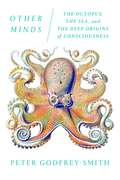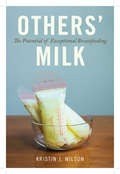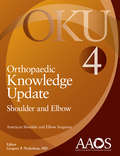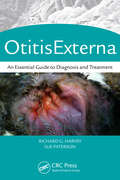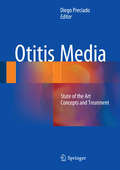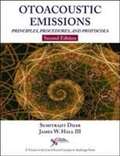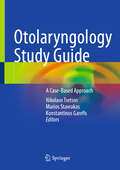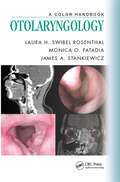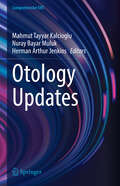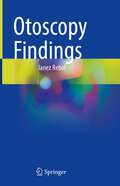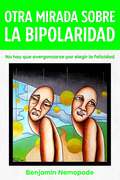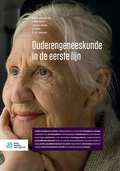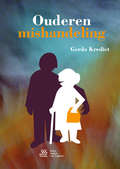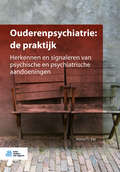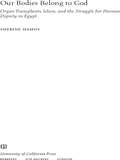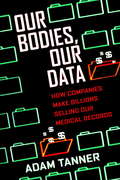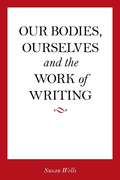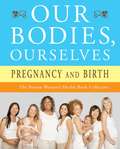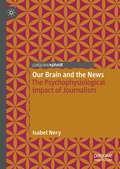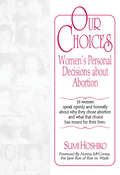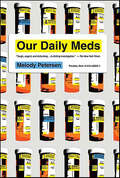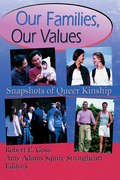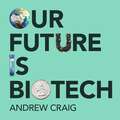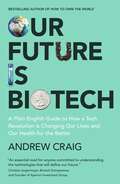- Table View
- List View
Other Minds: The Octopus, the Sea, and the Deep Origins of Consciousness
by Peter Godfrey-SmithAlthough mammals and birds are widely regarded as the smartest creatures on earth, it has lately become clear that a very distant branch of the tree of life has also sprouted higher intelligence: the cephalopods, consisting of the squid, the cuttlefish, and above all the octopus. In captivity, octopuses have been known to identify individual human keepers, raid neighboring tanks for food, turn off lightbulbs by spouting jets of water, plug drains, and make daring escapes. How is it that a creature with such gifts evolved through an evolutionary lineage so radically distant from our own? What does it mean that evolution built minds not once but at least twice? The octopus is the closest we will come to meeting an intelligent alien. What can we learn from the encounter? <P><P>In Other Minds, Peter Godfrey-Smith, a distinguished philosopher of science and a skilled scuba diver, tells a bold new story of how subjective experience crept into being―how nature became aware of itself. As Godfrey-Smith stresses, it is a story that largely occurs in the ocean, where animals first appeared. Tracking the mind’s fitful development, Godfrey-Smith shows how unruly clumps of seaborne cells began living together and became capable of sensing, acting, and signaling. As these primitive organisms became more entangled with others, they grew more complicated. The first nervous systems evolved, probably in ancient relatives of jellyfish; later on, the cephalopods, which began as inconspicuous mollusks, abandoned their shells and rose above the ocean floor, searching for prey and acquiring the greater intelligence needed to do so. Taking an independent route, mammals and birds later began their own evolutionary journeys. <P><P>But what kind of intelligence do cephalopods possess? Drawing on the latest scientific research and his own scuba-diving adventures, Godfrey-Smith probes the many mysteries that surround the lineage. How did the octopus, a solitary creature with little social life, become so smart? What is it like to have eight tentacles that are so packed with neurons that they virtually “think for themselves”? What happens when some octopuses abandon their hermit-like ways and congregate, as they do in a unique location off the coast of Australia? <P><P>By tracing the question of inner life back to its roots and comparing human beings with our most remarkable animal relatives, Godfrey-Smith casts crucial new light on the octopus mind―and on our own.
Others' Milk: The Potential of Exceptional Breastfeeding
by Kristin J. WilsonBreastfeeding rarely conforms to the idealized Madonna-and-baby image seen in old artwork, now re-cast in celebrity breastfeeding photo spreads and pro-breastfeeding ad campaigns. The personal accounts in Others’ Milk illustrate just how messy and challenging and unpredictable it can be—an uncomfortable reality in the contemporary context of high-stakes motherhood in which “successful” breastfeeding proves one’s maternal mettle. Exceptional breastfeeders find creative ways to feed and care for their children—such as by inducing lactation, sharing milk, or exclusively pumping. They want to adhere to the societal ideal of giving them “the best” but sometimes have to face off with dogmatic authorities in order to do so. Kristin J. Wilson argues that while breastfeeding is never going to be the feasible choice for everyone, it should be accessible to anyone.
Othopaedic Knowledge Update: Shoulder and Elbow
by Gregory P. NicholsonSome of todays most respected orthopaedic surgeons have researched and reviewed the latest, most compelling orthopaedic shoulder and elbow content from around the world to give practicing professional easy access to actionable information, new techniques, and though provoking perspectives. You'll discover the latest advances—along with controversial topics—that impact how you practice today. Gain practical insights from the recent literature on: rotator cuff repair and graft augmentation, collagen patches, biologic issues, and much more.
Otitis Externa: An Essential Guide to Diagnosis and Treatment
by Sue Paterson Richard G. Harvey BVSc DVD Dip ECVD FSBThe investigation and management of ear disease occupies a significant portion of a veterinary clinician's time. Otitis externa, in particular, is likely to be seen by a busy small animal clinician at least once a day. Chronic, and chronic recurrent, it is frustrating and costly to the owner and often painful for the animal. This book provides a comprehensive source of information on the relevant structure, function, medicine, and surgery of the ear, from Otodectes cynotis infection to Pseudomonas aeruginosa infection. The book details the salient points of diagnosis and treatment and includes more than 200 colour illustrations.
Otitis Media: State of the art concepts and treatment
by Diego PreciadoOtitis media (OM) is the most common diagnosis at medical visits in preschool-age children, and the literature suggests that as many as 80% of children will suffer from at least one episode. Written by acknowledged experts, this is a state of the art reference on the disesase and controversies in the field. Recent important advances in our understanding of predisposition to the disease and vaccine development are described and diagnostic best practices are presented. Otitis Media: State of the Art Concepts and Treatment is for any health care provider who works with children, and their ability to diagnose and appropriately manage OM is therefore an essential skill. The roles of antibiotics, tympanostomy, and surgery in the treatment of OM are carefully examined, with discussion of the impact of guidelines and future directions. Otitis Media: State of the Art Concepts and Treatment is an invaluable source of up-to-date information for all involved in research into OM and its management.
Otoacoustic Emissions: Principles, Procedures, And Protocols, Second Edition
by James Hall Sumitrajit DharOtoacoustic Emissions: Principles, Procedures, and Protocols, Second Edition is a readable yet comprehensive source of information on otoacoustic emissions (OAEs). OAEs now play an important role in hearing screening and the clinical assessment of children and adults. The text begins with a succinct overview of OAEs and a historical description of their discovery and emergence as a clinical tool. <p><p> Otoacoustic Emissions distills in 10 chapters the latest information on OAEs from basic research to clinical applications. The book is concise, but comprehensive, and covers the essentials of the subject from innovative and up-to-date perspectives. The second edition features updates across all chapters, including current research findings and changing perspectives on OAE taxonomy. Important information is highlighted with new and updated illustrations throughout the book. <p> The material covered in the book is appropriate for intermediate and advanced students, and ideal for practicing audiologists. With a focus on practical information needed by the clinical audiologist and an eye to technological developments, authors Dhar and Hall provide an up-to-date, straightforw
Otolaryngology Study Guide: A Case-Based Approach
by Marios Stavrakas Nikolaos Tsetsos Konstantinos GarefisThe book presents a case-based review of Otolaryngology, Head and Neck Surgery, guiding readers step by step through the principles of safe care. Each chapter begins with an abstract, followed by a case presentation and multiple-choice questions (MCQs) with brief answers on diagnosis, workup, differential diagnosis, treatment, surgical procedures, and follow-up. Accompanied by color figures, tables summarizing key technical steps, drawings, and algorithms, the volume presents information in a format that is easy to understand and remember. Given its features, the book is an ideal study guide for ENT trainees, senior ENT residents, and fellows preparing for board examinations, as well as a quick reference for all ENT surgeons who wish to test and improve their knowledge using the latest available evidence-based references and data.
Otolaryngology: A Color Handbook (Medical Color Handbook Series)
by Laura H. Swibel Rosenthal Monica O. Patadia James A. StankiewiczThis book is designed to help the busy practitioner develop a differential diagnosis for the otolaryngology problems they encounter in the outpatient, inpatient, or emergency setting. The authors discuss clinical presentations and treatments, complemented by photographs of examinations and procedures to help physicians with diagnosis. <P><P>The book features concise descriptions and highlights key treatment plans for the most common conditions in otolaryngology. For ease of reference, chapters are organised into five major sections, reflecting the make-up of the specialty: Otology, Rhinology/Skull Base, Laryngology, Head & Neck, Facial Plastics, and Pediatrics. <P><P>Easy to read and richly illustrated with relevant clinical photographs and diagrams, Otolaryngology: A Color Handbook will be an indispensable reference for otolaryngologists, primary care providers, physician assistants, nurses, and students.
Otology Updates (Comprehensive ENT)
by Nuray Bayar Muluk Mahmut Tayyar Kalcioglu Herman Arthur JenkinsThis book provides a comprehensive and up-to-date overview of general information, along with an evaluation of diagnostic and therapeutic options for individuals suffering from otologic diseases. Covering fundamental sciences, clinical applications of otology treatments, and the latest research, it is designed to aid physicians in making well-informed decisions about patient care management. Divided into seven parts, the book addresses topics such as hearing reconstruction and its acoustic impact, cochlear implants, brainstem implants, genetic causes of hearing loss, including prevention and rehabilitation, sudden deafness, autoimmune inner ear disease, and the molecular basis of otosclerosis. Contributors also explore the contemporary clinical application of genetics and available testing for hearing loss. This volume will serve as an invaluable resource for otolaryngologists, head and neck surgeons, audiologists, neurologists, neurosurgeons, and residents, offering a comprehensive guide to enhance their understanding and practice.
Otoscopy Findings
by Janez RebolThe book is intended to serve as a practical guide to effective ear examination. Learning to perform otoscopy is not easy because the external auditory canal is obstructed by cerumen, otorrhea can be present, and the tympanic membrane is sometimes only partially visible. In children, it is even more difficult because of the narrow ear canal, the alignment of the tympanic membrane, and the restlessness of the child. Uncertainty in diagnosis can lead to overtreatment, as in the case of acute otitis media and unnecessary prescription of antibiotics. On the other hand, delay in diagnosis may lead to severe complications such as mastoiditis, meningitis and brain abscess in case of overlooked middle ear cholesteatoma. This textbook aims to facilitate learning through a wealth of full color otoscopic pictures and is divided into chapters that cover the major otologic pathologies. The volume includes images related to cochlear implants and bone conduction devices, along with the images of the major surgical procedures or conditions associated with them. It also helps the reader to identify the conditions in which surgical intervention is mandatory. Given its didactic approach, this guide will be an invaluable resource for medical students and residents in otolaryngology, and in paediatrics and general medicine alike.
Otra mirada sobre la bipolaridad: No hay que avergonzarse por elegir la felicidad
by Benjamin NemopodeEl increíble recorrido de un hombre a través del trastorno bipolar. ¿Está diagnosticado con bipolaridad? ¿Conoce a alguien que padezca esta enfermedad y esté luchando por encontrarse a sí mismo? ¿Está buscando aprender más sobre este terrible problema psíquico? ¿Está buscando la paz o está interesado en el budismo? ¿Trastorno bipolar o realidad del despertar espiritual? Siga el camino de Arthuro Jobsquare, bipolar, de Paris a Montreal, pasando por Londres, hasta alcanzar el estado de Buda. Una aventura fantástica, un golpe a la bipolaridad. Una determinación impresionante para superar esta enfermedad que amenazaba con controlarlo para siempre. Descripción de la enfermedad y del increíble recorrido de un bipolar tipo 1. Este libro describe el increíble camino de un bipolar y proporciona una descripción precisa y exacta de esta enfermedad. Si está buscando un libro sobre el trastorno bipolar o sobre el despertar espiritual, no busque más, lo ha encontrado... Encargue su ejemplar AHORA y comience su propio despertar. Extractos de comentarios de lectores ★★★★★ "El autor nos habla de su doloroso recorrido como bipolar tipo 1. Es un relato conmovedor, logrado y maravillosamente escrito..." - Frédérique Madison (Francia) ★★★★★ "Leí este libro en varias veces lo cual no es mi costumbre. Es necesario pausar la lectura, recuperar el aliento y retomarla. Uno siente todo el sufrimiento de la persona que se esfuerza por poner distancia con su vivencia... "- Armand Poursin (Francia) ★★★★★ "Recomiendo este libro como complemento de todas la investigaciones sobre la enfermedad y de los testimonios de personas afectadas por la misma. Pude entenderla con mayor claridad. Y hoy amo aún más a mi hombre que es bipolar. ." -Eva de Almeida ★★★★★ "Este libro es increíblemente preciso, su lectura es fundamental para todos aquellos que de
Ouderengeneeskunde in de eerste lijn
by J.W.M. Muris J.M.G.A. Schols J. Collet D.J.A. JanssenWe leven steeds langer – langer in gezondheid, maar ook langer met chronische ziekten en beperkingen. Het huidige beleid is erop gericht dat ouderen zolang mogelijk in hun eigen woonomgeving kunnen blijven wonen, ook als zij kwetsbaar worden. Dit geeft het belang aan van goede eerstelijnsgeneeskunde die voldoende is uitgerust om ouderen zonder en met matige tot ernstige ziektelast goed te behandelen en te begeleiden. Ouderengeneeskunde in de eerste lijn bestaat uit twee delen. In het eerste deel worden overkoepelende onderwerpen behandeld: de visie op ouderen vanuit de maatschappij, de huisartspraktijk en het zorgmanagement, de wet- en regelgeving en de vroeg-signalering en screening. In het tweede deel, over klachten en ziektebeelden, wordt een overzicht gegeven van de klachten die ouderen kunnen hebben, zoals functieverlies, chronische pijn, acute verwardheid, gedragsproblemen en chronische dyspnoe. Geheel nieuwe hoofdstukken zijn die over de oudere met een verstandelijke beperking en over de veerkrachtige oudere in het licht van Positieve Gezondheid. Het boek richt zich op huisartsen en praktijkondersteuners die zich bezighouden met ouderenzorg. Ook specialisten ouderengeneeskunde en verpleegkundig specialisten zullen in deze editie veel bruikbare informatie vinden. Het boek helpt de lezer zich te spiegelen aan de behandelde casuïstiek en praktische aanwijzingen. De redactie bestaat uit een huisarts en drie specialisten ouderengeneeskunde, die ook werkzaam zijn in het onderwijs en de wetenschap. De hoofdstukken zijn geschreven door huisartsen, medisch specialisten, verpleeghuisartsen en anderen met een specifieke specialisatie.
Ouderenmishandeling
by Gerda KredietHet boek ‘Ouderenmishandeling’ is bedoeld voor professionals in de zorg die in hun werk te maken krijgen met ouderen die mishandeld worden. Ouderenmishandeling is vaak een gevolg van overbelaste mantelzorg, echtelijke ruzies en opzettelijke mishandeling. De mishandeling kan bestaan uit lichamelijke mishandeling, psychische mishandeling, verwaarlozing, financiële uitbuiting en seksuele mishandeling. Het boek bestaat uit twee delen. In het eerste deel zijn vijftien casussen beschreven, waarna een analyse volgt van de gepleegde interventies en de resultaten. De casuïstiek is toegankelijk beschreven en maakt goed duidelijk wat ouderenmishandeling precies is, ook voor de nonprofessional. In het tweede deel worden interventiemogelijkheden beschreven die professionele hulpverleners concreet kunnen helpen bij de aanpak van ouderenmishandeling. Daarnaast vindt de lezer belangrijke informatie over wet- en regelgeving. ‘Ouderenmishandeling’ is een onmisbaar boek voor iedereen die zich beroepsmatig bezighoudt met ouderen: aandachtfunctionarissen, medewerkers Steunpunten Huiselijk Geweld, artsen, psychiaters, verpleegkundigen, thuiszorgmedewerkers, ouderenadviseurs en maatschappelijk werkers. Gerda Krediet werkte tien jaar als sociaalpsychiatrisch verpleegkundige bij het Meldpunt Ouderenmishandeling van de GGD Rotterdam-Rijnmond. Zij is nu directeur van Nood Zaak, een bureau voor advies, onderzoek en interventie bij ouderenmishandeling, en professioneel mentorschap.
Ouderenpsychiatrie: Herkennen en signaleren van psychische en psychiatrische aandoeningen
by Martin G. KatDit boek leert zorgprofessionals die werken met ouderen, om psychiatrische en psychische aandoeningen bij hun cliënten te herkennen en signaleren. Zij kunnen dankzij dit boek vroege adequate behandeling mogelijk maken.Dit boek koppelt praktijkvoorbeelden aan de beschreven aandoeningen bij ouderen. Professionals die werken met ouderen, zoals verzorgenden, (wijk)verpleegkundigen, POH’s en casemanagers.
Our Bodies Belong to God
by Sherine HamdyWhy has Egypt, a pioneer of organ transplantation, been reluctant to pass a national organ transplant law for more than three decades? This book analyzes the national debate over organ transplantation in Egypt as it has unfolded during a time of major social and political transformation--including mounting dissent against a brutal regime, the privatization of health care, advances in science, the growing gap between rich and poor, and the Islamic revival. Sherine Hamdy recasts bioethics as a necessarily political project as she traces the moral positions of patients in need of new tissues and organs, doctors uncertain about whether transplantation is a "good" medical or religious practice, and Islamic scholars. Her richly narrated study delves into topics including current definitions of brain death, the authority of Islamic fatwas, reports about the mismanagement of toxic waste predisposing the poor to organ failure, the Egyptian black market in organs, and more. Incorporating insights from a range of disciplines, Our Bodies Belong to God sheds new light on contemporary Islamic thought, while challenging the presumed divide between religion and science, and between ethics and politics.
Our Bodies, Our Data: How Companies Make Billions Selling Our Medical Records
by Adam TannerHow the hidden trade in our sensitive medical information became a multibillion-dollar business, but has done little to improve our health-care outcomesHidden to consumers, patient medical data has become a multibillion-dollar worldwide trade industry between our health-care providers, drug companies, and a complex web of middlemen. This great medical-data bazaar sells copies of the prescription you recently filled, your hospital records, insurance claims, blood-test results, and more, stripped of your name but possibly with identifiers such as year of birth, gender, and doctor. As computing grows ever more sophisticated, patient dossiers become increasingly vulnerable to reidentification and the possibility of being targeted by identity thieves or hackers.Paradoxically, comprehensive electronic files for patient treatment—the reason medical data exists in the first place—remain an elusive goal. Even today, patients or their doctors rarely have easy access to comprehensive records that could improve care. In the evolution of medical data, the instinct for profit has outstripped patient needs. This book tells the human, behind-the-scenes story of how such a system evolved internationally.It begins with New York advertising man Ludwig Wolfgang Frohlich, who founded IMS Health, the world’s dominant health-data miner, in the 1950s. IMS Health now gathers patient medical data from more than 45 billion transactions annually from 780,000 data feeds in more than 100 countries. Our Bodies, Our Data uncovers some of Frohlich’s hidden past and follows the story of what happened in the following decades. This is both a story about medicine and medical practice, and about big business and maximizing profits, and the places these meet, places most patients would like to believe are off-limits.Our Bodies, Our Data seeks to spark debate on how we can best balance the promise big data offers to advance medicine and improve lives while preserving the rights and interests of every patient. We, the public, deserve a say in this discussion. After all, it’s our data.
Our Bodies, Ourselves and the Work of Writing
by Susan WellsWells (English, Temple U. ) has written an engaging study of the women and process behind the groundbreaking work, Our bodies ourselves, both its first 1973 edition and the 1984 revision. Produced by the Boston Women's Health Book Collective, Our bodies, ourselves was a revolutionary work, one which was written collectively. Wells presents a detailed chronological account of the conferences and meetings that led to the assignment of topics, the tussles with the publisher to maintain their voice, and later, their focus on the issue of the medicalization of women, in part as this was formulated by Brandeis sociologist Kenneth Zola. This is a superb, in-depth case study of an important organization of American feminism and its influential voice. Annotation ©2010 Book News, Inc. , Portland, OR (booknews. com)
Our Bodies, Ourselves: Pregnancy and Birth
by Judy Norsigian Boston Women's Health Book CollectiveALL THE INFORMATION YOU NEED TO MAKE WISE DECISIONS ABOUT YOUR PREGNANCY AND THE BIRTH OF YOUR CHILD -- FROM THE EDITORS OF THE CLASSIC "BIBLE OF WOMEN'S HEALTH" Pregnancy and birth are as ordinary and extraordinary as breathing, thinking, or loving. But as soon as you announce you're expecting, you may be bombarded with advice from every angle -- well-meaning friends, relatives, medical professionals, even strangers want to weigh in on what you should or shouldn't do, and it's easy to feel overwhelmed by their conflicting recommendations. Our Bodies, Ourselves: Pregnancy and Birth will help you sort fact from fiction, giving you the most accurate research, up-to-date information, and the firsthand experiences of numerous women who have been exactly where you are today. You'll get the tools you need to take care of yourself and your baby during and after your pregnancy, from tips on eating well during pregnancy to strategies for coping with stress and depression. Learn everything you need to know about: CHOOSING A GOOD HEALTH CARE PROVIDER SELECTING A PLACE OF BIRTH UNDERSTANDING PRENATAL TESTING COPING WITH LABOR PAIN SPEEDING YOUR PHYSICAL RECOVERY ADJUSTING TO LIFE AS A NEW MOTHER OUR BODIES, OURSELVES: PREGNANCY AND BIRTH IS AN ESSENTIAL RESOURCE FOR WOMEN THAT WILL GUIDE YOU THROUGH THE MANY DECISIONS AHEAD.
Our Brain and the News: The Psychophysiological Impact of Journalism
by Isabel NeryThis book explores the impact of news and literary journalism on human cognition and emotion. Providing an innovative analysis of psycho-physiological measures, including emotional response, perception of pain, and changes in heartbeat, Nery seeks to understand how readers react to journalistic texts. There is a growing enthusiasm in the search for understanding the processing of information, with some already arguing for the establishment of the neuroscience of communication as a new discipline. By combing neuroscience methods with communication research studies, specifically journalistic research and theory, Nery offers us a unique way of exploring and thinking about news, literary journalism, and the brain.
Our Choices: Women's Personal Decisions About Abortion
by Sumi HoshikoRelationships, sex, pregnancy, and abortion are among the topics discussed with engaging frankness by sixteen women in this collection of oral histories. Our Choices: Women’s Personal Decisions About Abortion presents readers with the opportunity to understand the abortion choice in a way that statistics and abstract debate cannot. The accounts show how pregnancy and abortion are inextricably tied together in the complicated social and psychological lives of men and women. By exploring the women’s feelings about becoming pregnant unintentionally and the circumstances surrounding that occurrence, the stories reveal much about how men and women communicate with each other about sex, the effect of pregnancy and abortion on relationships, and how a woman’s upbringing has shaped her knowledge and attitudes regarding sex and abortion.Our Choices: Women’s Personal Decisions About Abortion includes stories of both legal and illegal abortions from the 1950s through the 1980s. The women included represent a variety of socioeconomic, cultural, and religious backgrounds, reminding readers that any woman can potentially be faced with the decisions surrounding unintended pregnancy and abortion. The issues raised cover the trauma of an illegal abortion, abortion versus adoption, abortion following rape, abortion as a medical procedure, and the role of family and partner support.Women who are considering abortion or who have had an abortion in the past will gain a deeper understanding of this complex and private experience; their partners, families, and friends will be better equipped to provide help and support. Professionals, including counselors and health care providers, will want to read this engrossing book and refer their clients to it. Students in women’s studies and health care programs, policymakers, ethicists, and others with an interest in women’s issues will find the book enlightening. It should be read by anyone wishing a more complete knowledge of abortion and the vast array of issues it encompasses.Our Choices: Women’s Personal Decisions About Abortion can be sold in family planning clinics to clients, used in pregnancy counseling training, and retained for reference by both public libraries and family planning clinics, reproductive rights organizations, universities, and women’s centers.
Our Daily Meds
by Melody PetersenIn the last thirty years, the big pharmaceutical companies have transformed themselves into marketing machines selling dangerous medicines as if they were Coca-Cola or Cadillacs. They pitch drugs with video games and soft cuddly toys for children; promote them in churches and subways, at NASCAR races and state fairs. They've become experts at promoting fear of disease, just so they can sell us hope. No question: drugs can save lives. But the relentless marketing that has enriched corporate executives and sent stock prices soaring has come with a dark side. Prescription pills taken as directed by physicians are estimated to kill one American every five minutes. And that figure doesn't reflect the damage done as the overmedicated take to the roads. Our Daily Meds connects the dots for the first time to show how corporate salesmanship has triumphed over science inside the biggest pharmaceutical companies and, in turn, how this promotion driven industry has taken over the practice of medicine and is changing American life. It is an ageless story of the battle between good and evil, with potentially life-changing consequences for everyone, not just the 65 percent of Americans who unscrew a prescription cap every day. An industry with the promise to help so many is now leaving a legacy of needless harm.
Our Families, Our Values: Snapshots of Queer Kinship
by Robert Goss Amy Adams Squire StrongheartOur Families, Our Values challenges both the gay community and American society to examine carefully the meaning of family values and the nature of social institutions such as marriage and the family. It asks you provoking, even disturbing, questions such as: “Is it prudent for members of the Lavender community to mimic heterosexual marriage or define personal relations networks as families, when these institutions are rapidly collapsing?” “Are we attempting to mainstream American society into accepting different views of marriage and families?” “Are we subscribing to notions of sexual property that are inherent to the marriage ceremony and the institution of marriage, when we choose to be married?” Despite the complexities of this issue, marriage constitutes a privileged position in western society, and, as this book shows you, without the legal recognition of same-sex marriages, there are many fundamental rights, as well as privileges, denied to gay, lesbian, bisexual, and transgendered persons.As Our Families, Our Values turns upside-down the widely accepted notion that only heterosexual people are entitled to get married, have sex, and rear children, you gain insight into personal struggles and affirmations that testify to the spirituality, procreativity, and wholesomeness of the diverse relationships of the Lavender community. You will also learn about various ongoing efforts to give religious pride to the various configurations of gay relationships, families, and values and the disruption of popular interpretations of the Scriptures that have been used to justify the oppression of sexual minorities. This book will intrigue you over and over again, as you read about: value systems transphobia equal marriage rights Buddhism’s rejection of “traditional family values” Brazil’s sex-positive culture differences between gay male social formations and families choosing a language and terms that empower sexual minorities and the essence of the liberation movement sex as communion relationships based on nurture, not transactionDesigned for academics and students of religion, pastors, priests, rabbis, and lay readers alike, Our Families, Our Values is a multifaceted view of the gay community’s response to the public controversy over gay marriage, adoption, and foster care rights. Ideal as a textbook for courses in sexuality, theology, sociology, women’s studies, and gay and lesbian studies, this book will both inform you and delight you as it reminds you that same-sex unions bring much cause for celebration and that religion and homosexuality are not mutually exclusive.
Our Future is Biotech: A Plain English Guide to How a Tech Revolution is Changing Our Lives and Our Health for the Better
by Andrew Craig"An essential read for anyone committed to understanding the technologies that will define our future." CHRISTIAN ANGERMAYER, BIOTECH ENTREPRENEUR AND FOUNDER OF APEIRON INVESTMENT GROUPWelcome to the biotech revolutionIn the last century, technology has transformed the human experience across the world. This has been super-charged by the arrival of the internet, smart phones, AI and machine learning, and created trillion-plus dollar companies and household names like Apple, Amazon, Google and Microsoft.Our Future is Biotech explains why biotech is next: because our biggest remaining challenges as a species concern biological systems.Biotech companies will solve our most intractable problems, from cancer, dementia, obesity and diabetes to elderly care, mental health conditions, and even clean power generation, agricultural production and environmental degradation.Biotech means that we can all live better, safer, healthier, wealthier, happier, and longer lives.The industry has already delivered "miracle cures" for several diseases, and there is more to come. But despite this, few people are aware of the phenomenal progress being made. Our Future is Biotech addresses this, explaining what biotech is, what is coming next, and how you might profit from it too.Tech has been the most important theme for human progress for the last century. Biotech is next.
Our Future is Biotech: A Plain English Guide to How a Tech Revolution is Changing Our Lives and Our Health for the Better
by Andrew Craig"An essential read for anyone committed to understanding the technologies that will define our future." CHRISTIAN ANGERMAYER, BIOTECH ENTREPRENEUR AND FOUNDER OF APEIRON INVESTMENT GROUPWelcome to the biotech revolutionIn the last century, technology has transformed the human experience across the world. This has been super-charged by the arrival of the internet, smart phones, AI and machine learning, and created trillion-plus dollar companies and household names like Apple, Amazon, Google and Microsoft.Our Future is Biotech explains why biotech is next: because our biggest remaining challenges as a species concern biological systems.Biotech companies will solve our most intractable problems, from cancer, dementia, obesity and diabetes to elderly care, mental health conditions, and even clean power generation, agricultural production and environmental degradation.Biotech means that we can all live better, safer, healthier, wealthier, happier, and longer lives.The industry has already delivered "miracle cures" for several diseases, and there is more to come. But despite this, few people are aware of the phenomenal progress being made. Our Future is Biotech addresses this, explaining what biotech is, what is coming next, and how you might profit from it too.Tech has been the most important theme for human progress for the last century. Biotech is next.
Our Future is Biotech: A Plain English Guide to How a Tech Revolution is Changing Our Lives and Our Health for the Better
by Andrew Craig"An essential read for anyone committed to understanding the technologies that will define our future." CHRISTIAN ANGERMAYER, BIOTECH ENTREPRENEUR AND FOUNDER OF APEIRON INVESTMENT GROUPWelcome to the biotech revolutionIn the last century, technology has transformed the human experience across the world. This has been super-charged by the arrival of the internet, smart phones, AI and machine learning, and created trillion-plus dollar companies and household names like Apple, Amazon, Google and Microsoft.Our Future is Biotech explains why biotech is next: because our biggest remaining challenges as a species concern biological systems.Biotech companies will solve our most intractable problems, from cancer, dementia, obesity and diabetes to elderly care, mental health conditions, and even clean power generation, agricultural production and environmental degradation.Biotech means that we can all live better, safer, healthier, wealthier, happier, and longer lives.The industry has already delivered "miracle cures" for several diseases, and there is more to come. But despite this, few people are aware of the phenomenal progress being made. Our Future is Biotech addresses this, explaining what biotech is, what is coming next, and how you might profit from it too.Tech has been the most important theme for human progress for the last century. Biotech is next.
